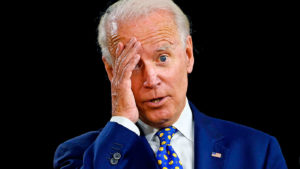In 1946, the American author John Gunther described Houston as “mostly ugly and barren, without a single good restaurant and hotels with cockroaches”. The only reasons to live in the city, he claimed, were financial; it was a place “where few people think about anything but money”.
This view was widespread at the time, and has lingered well into the 21st century. Forget Houston. New York, Chicago, San Francisco, and Los Angeles are the cities most frequently associated with the urban American dream.
Fast forward to today, however, and a new urban renaissance is taking shape — and this time, it’s in the heart of Texas. Never before in American history have two metros in one state — Houston and Dallas-Ft. Worth — been in the nation’s five largest. So much for its cockroaches; at its current rate of growth, Houston could replace Chicago as the nation’s third largest municipality by 2030.
What’s driving this Texan resurgence? Traditionally, American cities such as Detroit, Cleveland, and St. Louis all tried to copy the model set by New York and, to a lesser extent, Chicago, with high-rise offices crowded into central business districts. But Texas urbanism is different. They may wear cowboy boots, drive pickup trucks, and attend rodeos, but Texans have created a new model of American urbanity rooted in the demands of the consumer market — an idea deeply offensive to many planners and retro-urbanists.
Some observers lament the fact that the vast majority of Texas’s metropolitan growth — nearly 100% — has taken place in the suburbs and exurbs. But this has its benefits, not least the fact that its cities haven’t been turned into rabbit warrens that only provide high living standards to the rich. Over the past decade, Texas has built three times as much housing as California. This has allowed its cities, despite massive demographic and economic growth, to keep housing prices significantly lower than in coastal Californian cities such as San Francisco, San Jose, San Diego and Los Angeles.
But while affordability has been the secret sauce for Texan cities, its urbanism also thrives by embracing the realities of the marketplace. Over the past decade, Austin and Dallas have created jobs two to three times faster than New York, Los Angeles, or Chicago. And this growth is not all at the low end of the job market, as some like the New York Times’s Paul Krugman suggest. Over the past five years, for instance, Austin has displaced San Francisco as the fastest growing tech market. Indeed, Austin is now arguably the strongest rival to Silicon Valley, home to the headquarters of Tesla, and Oracle, as well as Apple’s engineering division and Meta’s latest expansion, 33 floors downtown.
But the most significant expansion has been in professional and business services, the core of the new urban economy. Over the past five years, Austin and Dallas-Ft. Worth have created more than twice as many new business service jobs as San Jose; all four big Texas cities have grown this sector many times the rate of New York, Los Angeles, or Chicago. The Dallas metroplex is now home to 24 Fortune 500 company headquarters, trailing only New York and Chicago by a small number; 40 years ago, the region had fewer than five.
Perhaps the most important consequence has been in demographics, particularly critical in this era of persistent labour shortages. The media insists on portraying millennials as desperate to settle in places such as Brooklyn, but in reality they have been fleeing these neighbourhoods — heading instead to Texan cities, where they can more readily afford homes or spacious rental apartments. During the tech boom of the late Nineties, more people moved from Texas to the Bay Area than vice versa; today, however, the pattern is reversed, with Austin, Houston, and Dallas — and their lower costs of living — all among the leading gainers.
Texan metros, notably Houston and Austin, also are among the nation’s leading destinations for minorities and immigrants, the drivers of America’s demographic future. As Patrick Jankowski, chief economist for the Greater Houston Economic Partnership, has noted, the area added more than one million people over the past decade, the majority of them Hispanic, and barely one-tenth Anglo.
It’s not hard to see why. Cities such as Houston are no longer defined by the decades-old, often troubled relationship between African American, Latino, and white populations. Instead, Houston is now widely considered the most diverse major metropolitan area in the country. In 1960, Harris County, which includes Houston and many of its suburbs, was 70% white and 20% African American. Today, the county’s total population is 31% white, 42% Hispanic, 19% black and 8% Asian. As one researcher in Austin recently put it: “Driving down any major road in Southwest Houston… it is impossible to miss the signs for African grocers, churches with names of Nigerian pastors and restaurants, interspersed with shop signs in Spanish, Indian grocers, and Pakistani tailors, along with signs advertising lawyers and accountants from these countries.”
All this is hardly surprising when you consider that Latinos and African-Americans are far more likely to be home owners in Texas cities than in New York, Los Angeles, Boston, or San Francisco. Meanwhile, in a 2016 measurement of best cities for Latino entrepreneurs, Texas accounted for more than one third of the top 50 cities out of 150. In another measurement, San Antonio and Houston boasted far larger shares of Latino-owned businesses than Los Angeles, which also has a strong Latino presence.
Crucially, this Texan boom doesn’t look to be slowing down. While many of America’s cities have been devastated by the pandemic, Texas’s model has proved resilient. New working-from-home policies may have devastated central business districts in New York and San Francisco. But only 5% of Houston employment and 2% of Dallas’s is in the CBD , compared to 20% in New York, and 16% in San Francisco. And as city centres stagnated and saw their residents leave — a phenomenon that also hit the densest parts of Texas cities — rapid growth in the suburbs and exurbs more than made up for the losses. In fact, Dallas was the largest gainer last year due to rapid growth on the periphery.
Of course, some aspects of small-town Texas life — with its evangelical leanings and sometimes neo-confederate sympathies — hint at the less attractive remnants of the Lone Star State’s past. But the success of its cities proves that the region is now defined by something else. Texans no longer need to look to New York, San Francisco, Chicago, or Los Angeles as a model for their cities — quite the opposite. When it comes to the new American urban dream, Texas is the future.
Disclaimer
Some of the posts we share are controversial and we do not necessarily agree with them in the whole extend. Sometimes we agree with the content or part of it but we do not agree with the narration or language. Nevertheless we find them somehow interesting, valuable and/or informative or we share them, because we strongly believe in freedom of speech, free press and journalism. We strongly encourage you to have a critical approach to all the content, do your own research and analysis to build your own opinion.
We would be glad to have your feedback.
Source: UnHerd Read the original article here: https://unherd.com





